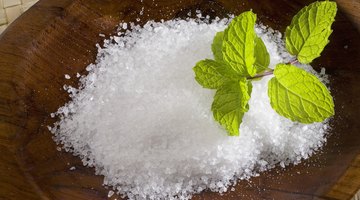Do Salt-Based Water Softener Systems Harm Home Septic Systems?
Table of Contents
Water softeners typically use salt as part of the process to make hard water work better. Water quality and sewage treatment experts have conducted studies on the effects of sodium in wastewater treatment.

These experts have come to conflicting conclusions since most studies were carried out in ideal or non-traditional septic system situations. A study from the National Sanitation Foundation that focused on salt-based water softeners emptying into an aerobic septic system found that the sodium introduced into the septic system was not harmful.
Soft Water
Water softeners use sodium in a process called ion exchange to strip the minerals that cause hard water. Sodium replaces calcium and magnesium, making the water “soft.” This soft water works more efficiently than hard water and requires less detergent, soap and shampoo to achieve the same amount of cleanliness. Softening water requires an occasional “regeneration,” which empties the filtered minerals into water treatment facilities.
Septic Systems
A conventional septic system uses anaerobic bacteria in a septic tank to break down harmful organisms in household sewage and wastewater. All water from the home—dishwater, bathing water and toilet flushing—enters the septic tank and separates into solids and liquids. Some homeowners worry that adding sodium and the amounts of water needed to soften water will adversely affect their septic system’s functionality by killing the essential bacteria or overloading the system.
Water Softener Effects
Because septic systems rely on naturally occurring bacteria in the septic tank to break down pathogens, research has been conducted to determine whether salt harms these bacteria. According to CAI Technologies, the amount of sodium introduced into the septic system through water softener regeneration is quite low, only 5,000 to 10,000 parts per million every so often.
Water volume during regeneration is also minimal--about 50 gallons, according to the Water Quality Association--and is added to the septic system slowly to prevent overload. Well-maintained and adequately sized septic systems are designed to handle this amount, which is less than the output from a top-loading washing machine.
Controversy
The Water Quality Association, or WQA, says salt-based water softeners are not harmful to septic systems. The WQA adds that delivery of the calcium and magnesium stripped from hard water into the drain fields improves bacterial growth and development. Dr. Mark Gross of Orenco Systems maintains that the studies cited by WQA were carried out on aerobic septic systems and not on the more popular anaerobic septic system. Gross says that salt water sinks to the bottom of an anaerobic septic tank and displaces the solids, which then pass into the drain fields, risking untreated pathogen delivery to the ground water.
Considerations
Although experts disagree on the effects of salt-based water softeners on traditional septic systems, most agree with the Environmental Protection Agency’s recommendations for keeping a septic system working properly. The EPA's recommended steps for good septic tank health include disconnecting your garbage disposal to eliminate food solids that decrease septic tank effectiveness. Reducing water usage overall helps the septic system to work better. Using natural products instead of harsh chemical cleaners and bathing products decreases the risks of killing beneficial septic tank bacteria.
Writer Bio
A freelance writer for more than 30 years, D.M. Gutierrez has had nonfiction, fiction and poetry published in women's, mystery, academic, children's, disability and teen print publications and websites including "Psychological Reports" and "Highlights for Children." She has an advanced degree in psychology from the University of California at Davis.
Photo Credits
- Design Pics/Tomas del Amo/Design Pics/Getty Images
- Design Pics/Tomas del Amo/Design Pics/Getty Images
More Articles



